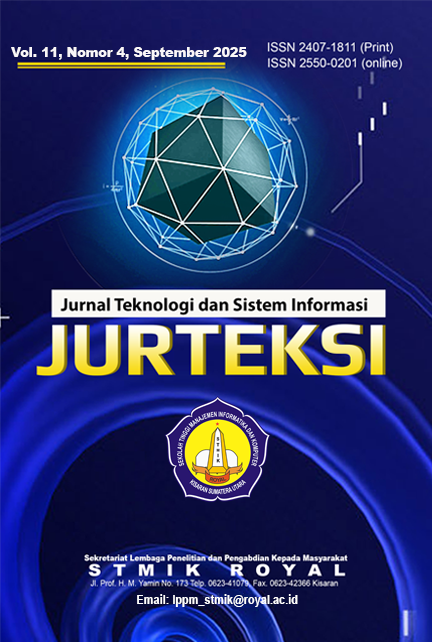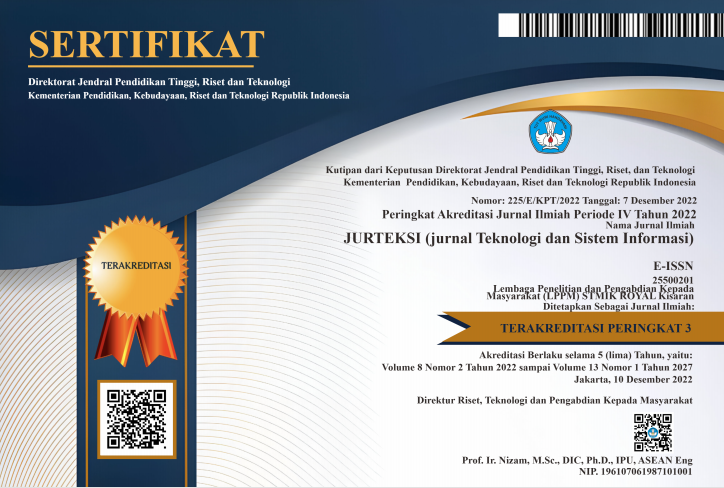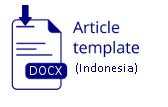ANALYSIS OF PSI METHOD IN DECISION SUPPORT SYSTEM TO SELECT THE FEASIBILITY OF COVID 19 PATIENT DATA SCANNER RESULTS
Abstract
Abstract: Hospitals play an important role in examining the scan results of patient data infected with the Covid 19 virus. However, there are problems when processing the scan results, namely that sometimes errors occur in the scan data, causing many failures and delays in sending data to the Health Office. The purpose of this study is to build a Desktop-based decision support system application that can facilitate hospitals in selecting the eligibility of the scan results of Covid 19 patient data. The urgency in examining the scan results of Corona patient data is a very pressing public health issue, because the long-term impact is very significant for patients. Thus, a scientific discipline is needed that can support the decision-making process, namely the Decision Support System using the Preference Selection Index (PSI) method. PSI is a simple and easy calculation method, based on statistical concepts without having to determine attribute weights. The results of this method are clear and firm values based on the level of strength of the rules applied. The results of the research conducted on the PSI process can be concluded that valid Covid 19 patient data is Recap File I with a value of 0.2042 which is declared valid and accepted.
Keywords: covid-19; decision support system; PSI
References
C. I. I. Purwaningsih and G. S. Darma, “Menelisik Stres Kerja Tenaga Kesehatan Dimasa Pandemi Covid-19 di Rumah Sakit,” J. Manaj. Bisnis, vol. 18, no. 3, pp. 361–381, 2021, doi: 10.38043/jmb.v18i3.3179.
Y. P. D. Utami, R. T. Pinzon, and A. Meliala, “Evaluasi Kesiapan Rumah Sakit Menghadapi Bencana Non-Alam: Studi Kasus COVID-19 di Rumah Sakit Bethesda Yogyakarta,” J. Kebijak. Kesehat. Indones. JKKI, vol. 10, no. 2, pp. 100–106, 2021, [Online]. Available: https://journal.ugm.ac.id/jkki/article/view/61686.
M. Yusa, A. Erlanshari, L. Haryani, E. Ernawati, and L. A. Umar, “Sistem Pakar: Implementasi Metode Bayes Probabilties untuk Penentuan Kriteria Pasien COVID-19 Berdasarkan Fitur Gejala (Studi Kasus: RSUD M. Yunus Bengkulu),” J. Teknol. Inf. dan Terap., vol. 8, no. 1, pp. 13–20, 2021, doi: 10.25047/jtit.v8i1.222.
R. Ridho and H. Hendra, “Klasifikasi Diagnosis Penyakit Covid-19 Menggunakan Metode Decision Tree,” JUST IT J. Sist. Informasi, Teknol. Inf. dan Komput., vol. 11, no. 3, pp. 69–75, 2022, [Online]. Available: https://jurnal.umj.ac.id/index.php/just-it/article/view/13594.
S. Anggraini, M. Akbar, A. Wijaya, H. Syaputra, and M. Sobri, “Klasifikasi Gejala Penyakit Coronavirus Disease 19 (COVID-19) Menggunakan Machine Learning,” J. Softw. Eng. Ampera, vol. 2, no. 1, pp. 57–68, 2021, doi: 10.51519/journalsea.v2i1.105.
M. W. El-anwar, S. Elzayat, and Y. Ahmed, “Since January 2020 Elsevier has created a COVID-19 resource centre with free information in English and Mandarin on the novel coronavirus COVID- 19 . The COVID-19 resource centre is hosted on Elsevier Connect , the company ’ s public news and information ,” no. January, 2020.
D. Hornuss, B. Lange, N. Schröter, S. Rieg, W. V. Kern, and D. Wagner, “Anosmia in COVID-19 patients,” Clin. Microbiol. Infect., vol. 26, no. 10, pp. 1426–1427, 2020, doi: 10.1016/j.cmi.2020.05.017.
O. Veza and N. Y. Arifin, “Sistem Pendukung Keputusan Calon Mahasiswa Non Aktif Dengan Metode Simple Additive Weighting,” J. Ind. Kreat., vol. 3, no. 02, pp. 71–78, 2020, doi: 10.36352/jik.v3i02.29.
S. Silaban, I. Zulkarnain, and F. Taufik, “Sistem Pendukung Keputusan Menentukan Kualitas Inti Kelapa Sawit Terbaik Menggunakan Metode ORESTE,” J. SAINTIKOM (Jurnal Sains Manaj. Inform. dan Komputer), vol. 21, no. 2, p. 40, 2022, doi: 10.53513/jis.v21i2.5957.
I. Zulkarnain, S. Sobirin, and M. J. Zaqy, “Sistem Pendukung Keputusan Dalam Rekrutmen Tim Digital Marketing Di PT. Inti Edukasi Internasional Menggunakan Metode ARAS(Additive Ratio Assesment),” J. Cyber Tech, vol. 5, no. 2, p. 54, 2023, doi: 10.53513/jct.v5i2.3584.
M. Braun, P. Hummel, S. Beck, and P. Dabrock, “Primer on an ethics of AI-based decision support systems in the clinic,” J. Med. Ethics, vol. 47, no. 12, p. E3, 2021, doi: 10.1136/medethics-2019-105860.
M. Mishra, “A Study on Decision Support Systems Concepts and Resources for Understanding and Managing Organization,” Appl. Sci. Eng. J. Adv. Res. Peer Rev. Ref. J. ISSN, no. 1, pp. 39–43, 2024, doi: 10.5281/zenodo.10723556.
A. Abdul-kareem, Z. Fayed, S. Rady, S. Amin, and B. Nema, “Advances in Decision Support Systems’ design aspects: architecture, applications, and methods,” Int. J. Intell. Comput. Inf. Sci., vol. 23, no. 2, pp. 74–104, 2023, doi: 10.21608/ijicis.2023.160460.1216.













